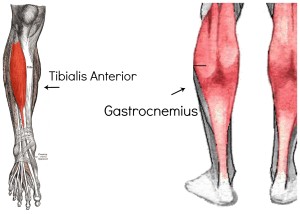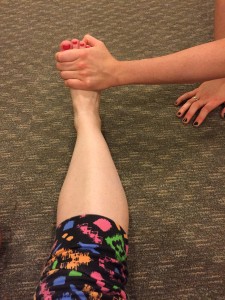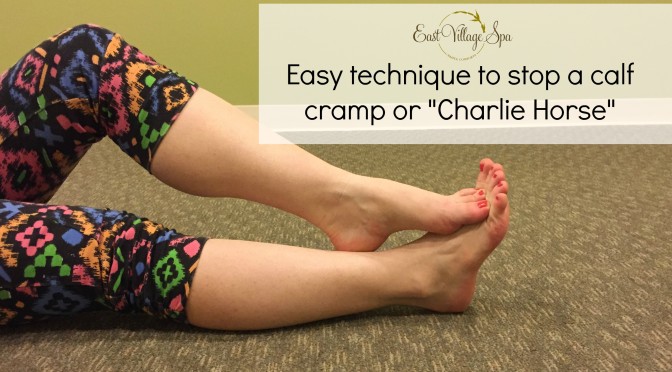Of all the self care massage techniques and tricks I’ve learned in 10 years as a massage therapist, the concept of reciprocal inhibition has been the most useful to me personally. Put simply, if a muscle is in spasm, you can stop the spasm by engaging the opposing muscle.
I’m frequently awoken by charlie horses (calf cramps, or a spasm of the Gastrocnemius muscle). The natural tendency is to want to grab the muscle and massage or to stretch it out. This can help, but what works best is to engage the opposing muscle, the Tibialis Anterior, as both can’t be firing at once!


If you have a partner (or are helping someone else who is in the middle of a spasm in their calf) you’ll want to push their their toes toward the ground, then have them flex their ankle to bring their toes toward their body. Basically, have them resist you, thus engaging the muscles in the front of their lower leg (specifically, the Tibialis Anterior). In this photo, my partner is trying to push my toes toward the ground but I’m resisting so she can’t.
This should stop the spasm right away. If you don’t have a partner (or you are courteous enough to not wake your significant other up in the middle of the night when you get a charlie horse!) you can apply the same principle yourself by using your other foot to push the against the top of the foot on the side with the spasming calf muscle while you try to draw your toes toward your body to resist the pressure.

This technique can be applied to many different muscles, but the calf is an easy spot to start and a common trouble spot for many people. I have tried this successfully many times at 3 am. I’ve even applied the same principle during open water swim races when I get calf cramps by letting one of my feet press against the other foot and resisting. I don’t even have to stop swimming (just kicking) to do it! It has saved me from some serious issues in the middle of a lake.
Curious about other applications for reciprocal inhibition or just want a more in-depth explanation? Click here for a good article! If you ever have the opportunity to test it out, I’d love to hear if it worked for you. Feel free to post a comment.

